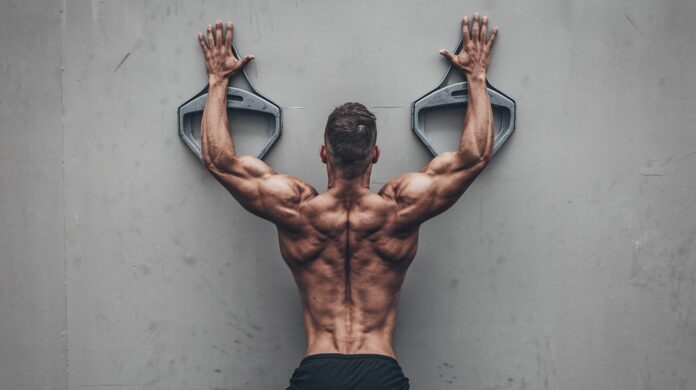Lower Trapezius Exercises: Effective Workouts for Improved Posture and Shoulder Stability
The lower trapezius is a crucial muscle in the upper back that plays a key role in shoulder stability, posture, and overall upper body strength. Strengthening the lower trapezius can help reduce shoulder pain, prevent injuries, and improve athletic performance. For those seeking to enhance their posture and shoulder function, targeting the lower trapezius with specific exercises is a must.
In this article, we’ll explore effective lower trapezius exercises, their benefits, and how to incorporate them into your workout routine for optimal results.
Why Lower Trapezius Exercises Are Essential
The trapezius muscle is a large, triangular muscle that extends down the back of the neck, across the shoulders, and up to the mid-back. It consists of three parts: the upper, middle, and lower portions. While many people focus on strengthening the upper and middle parts of the trapezius, the lower trapezius often gets neglected.
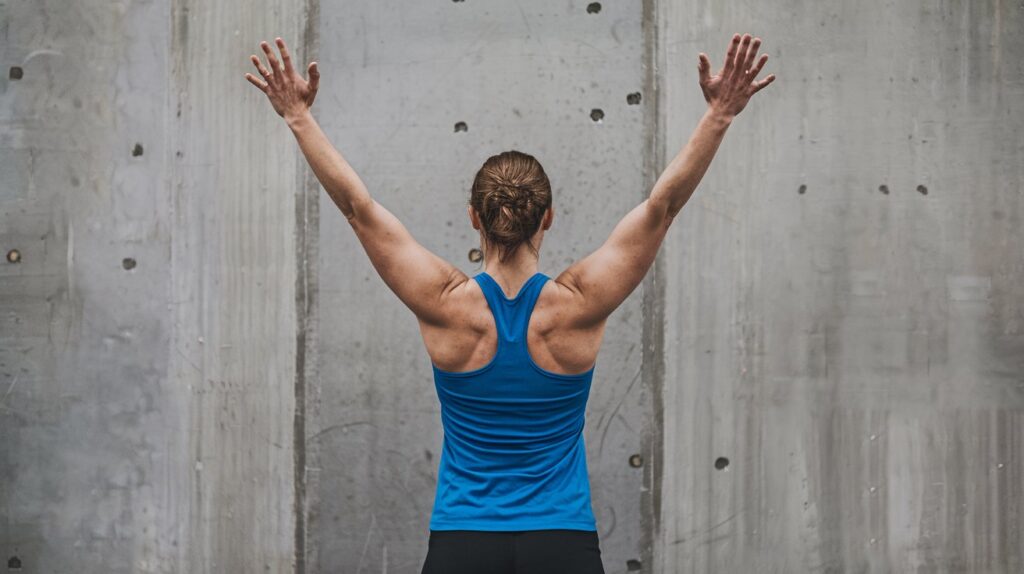
The lower trapezius is vital for:
- Posture: It helps stabilize the shoulder blades and keeps the upper back aligned.
- Shoulder Stability: It prevents the shoulders from becoming rounded or hunched forward.
- Pain Prevention: Strengthening the lower trapezius can reduce neck and shoulder pain.
- Improved Performance: A strong lower trapezius contributes to better lifting mechanics and more efficient movement patterns.
Now, let’s dive into the best lower trapezius exercises that will help you strengthen this muscle group effectively.
1. Scapular Wall Slides
How to Perform:
- Stand with your back flat against a wall, your feet about 6 inches away from the wall.
- Press your lower back and shoulders against the wall, and raise your arms to form a “W” shape.
- Slowly slide your arms up the wall, aiming to bring your elbows to a 90-degree angle while keeping your shoulders pressed against the wall.
- Focus on squeezing the shoulder blades down and together as you lift your arms.
- Lower the arms back to the starting position.
Why It Works: Scapular wall slides are an excellent way to engage the lower trapezius while improving mobility and stability in the shoulders. This exercise helps activate the muscle fibers responsible for scapular depression and retraction.
2. Prone Y Raises
How to Perform:
- Lie face down on an exercise bench or the floor with your arms extended in front of you in a “Y” shape.
- Keep your neck neutral and squeeze your shoulder blades together.
- Lift your arms off the ground/bench, aiming to bring your arms as high as possible without overextending the back.
- Hold for a second at the top, then slowly lower your arms back down.
Why It Works: This exercise targets the lower trapezius by emphasizing the scapular retraction and depression required to lift the arms. The angle of the arms (forming a Y) ensures proper engagement of the lower trapezius muscles.
3. Reverse Cable Flys
How to Perform:
- Set the cable machine to the lowest setting and attach two single handles.
- Stand facing the machine with one handle in each hand, arms extended in front of you.
- Pull the handles back and out to the sides while squeezing your shoulder blades together.
- Focus on pulling your elbows down and back to activate the lower trapezius.
Why It Works: Reverse cable flys are effective for isolating the lower trapezius muscles because they require scapular retraction and depression during the movement. Using cables allows for continuous tension throughout the range of motion.
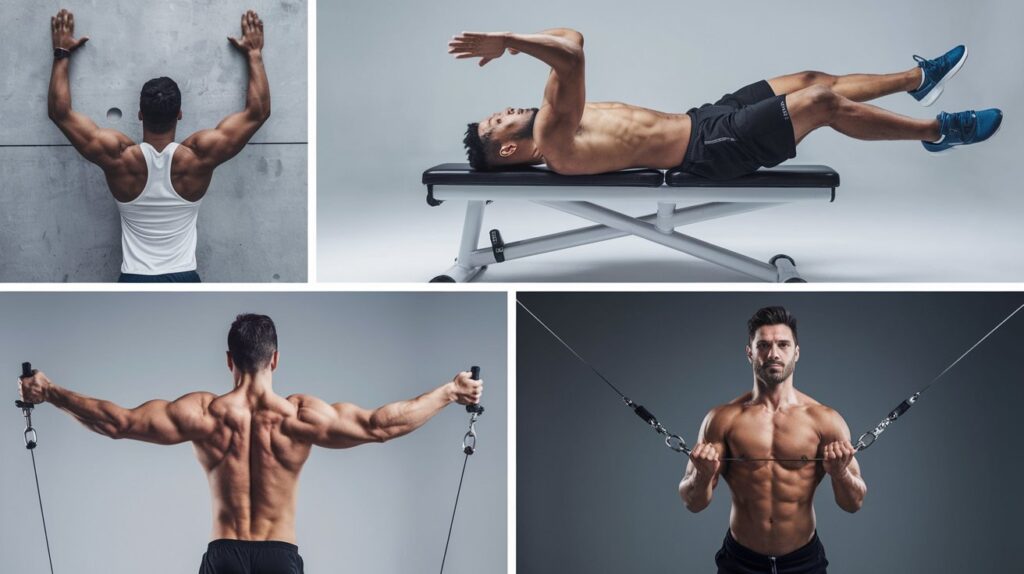
4. Face Pulls
- Set the rope attachment on a cable machine at eye level.
- Stand facing the machine with feet shoulder-width apart, grabbing the rope with both hands.
- Pull the rope towards your face, keeping your elbows high and wide, and focus on squeezing the shoulder blades together as you pull.
- Slowly release the rope back to the starting position.
Why It Works: Face pulls are a fantastic exercise for targeting the upper and lower trapezius, particularly the lower portion. The high elbow position emphasizes scapular retraction, which activates the lower trapezius for improved shoulder stability.
5. Dumbbell Shrugs with Scapular Retraction
How to Perform:
- Hold a dumbbell in each hand with your arms fully extended at your sides.
- Shrug your shoulders up towards your ears, then retract your shoulder blades by squeezing them together.
- Hold for a second at the top, focusing on engaging the lower traps, and then slowly lower the dumbbells back to the starting position.
Why It Works: Dumbbell shrugs with scapular retraction focus on strengthening the lower trapezius by emphasizing scapular depression and retraction during the shrugging motion. This helps target the muscle fibers that stabilize the shoulder blades.
6. Superman Exercise
How to Perform:
- Lie face down on the floor with your arms extended in front of you and your legs straight.
- Lift your arms, chest, and legs off the ground simultaneously while keeping your neck neutral.
- Hold the top position for a few seconds, then slowly lower back down.
Why It Works: The Superman exercise activates the lower trapezius as you extend your arms and legs, engaging the muscles in the upper back for stability. The lift targets the lower back and traps while enhancing overall strength.
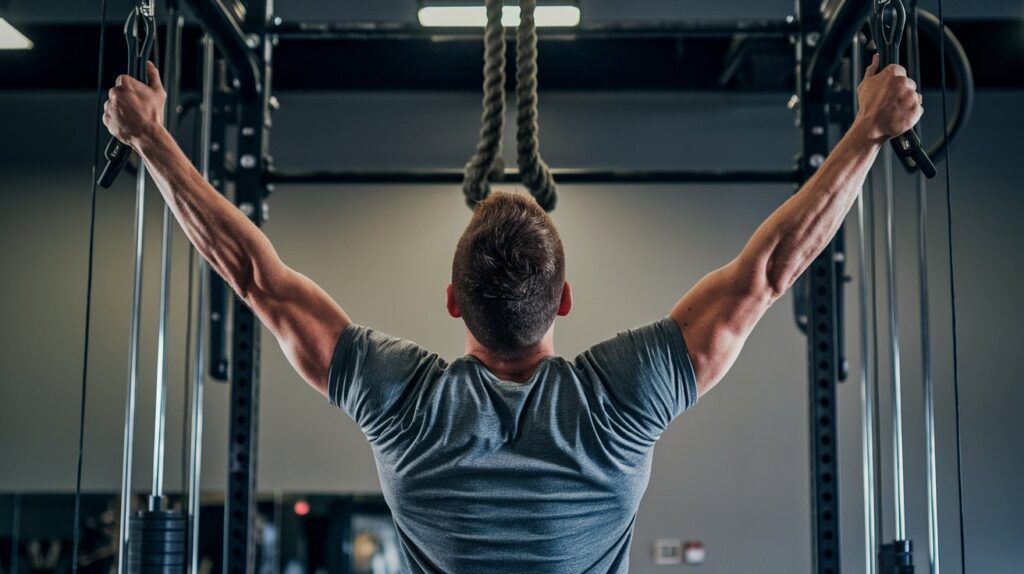
7. Lat Pulldowns with Scapular Depression
How to Perform:
- Sit at a lat pulldown machine with your hands gripping the bar slightly wider than shoulder-width apart.
- Before pulling the bar down, depress your scapula by pulling your shoulder blades down and back.
- Pull the bar down to your chest, focusing on using your back muscles and keeping the scapula depressed.
- Slowly release the bar back up, maintaining scapular depression throughout the movement.
Why It Works: Lat pulldowns with scapular depression engage the lower trapezius by ensuring the shoulder blades are actively pulled down and back before initiating the pull. This recruits the lower traps to stabilize the shoulders and enhance overall strength.
How to Incorporate Lower Trapezius Exercises into Your Routine
To see the best results from your lower trapezius training, aim to incorporate these exercises into your routine 2-3 times per week. Start with a warm-up that includes dynamic stretches and activation exercises for the shoulders and upper back. Follow it up with 3-4 sets of each of the exercises, performing 8-12 reps per set.

Key Tips for Maximizing Lower Trapezius Activation
- Mind-Muscle Connection: Focus on feeling the lower trapezius working during each exercise. This will help you improve activation and muscle recruitment.
- Proper Form: Maintaining correct posture and form is crucial for targeting the lower trapezius and preventing injury. Keep your back straight, shoulders down, and neck neutral.
- Controlled Movements: Perform each exercise slowly and with control, especially during the eccentric (lowering) phase, to increase time under tension.
FAQs on Lower Trapezius Exercises
Q1: How do I know if my lower trapezius is weak?
A: Symptoms of a weak lower trapezius can include rounded shoulders, poor posture, shoulder pain, and difficulty performing upper body exercises that involve shoulder stability.
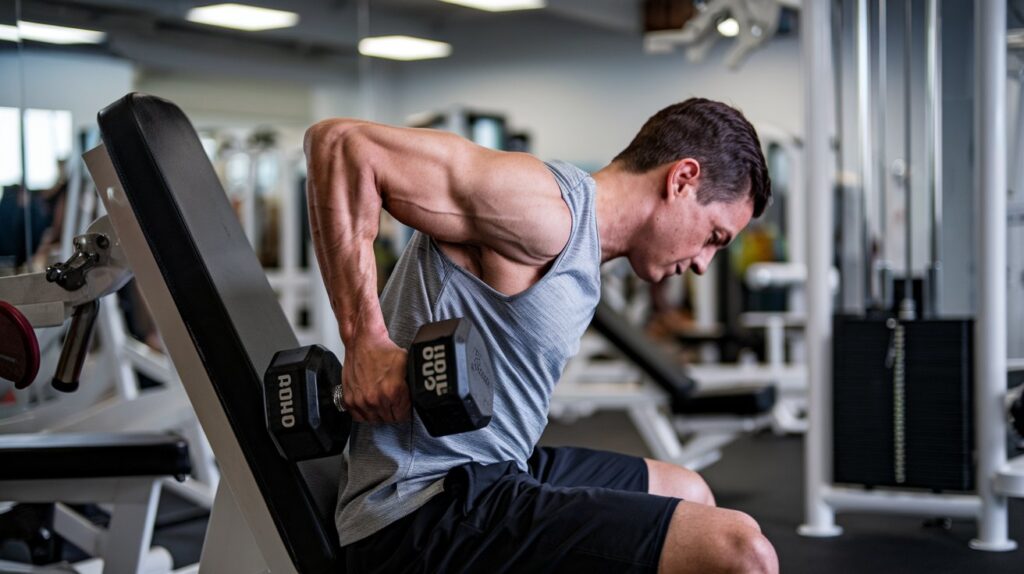
Q2: Can lower trapezius exercises help with neck pain?
A: Yes, strengthening the lower trapezius can help alleviate neck pain caused by poor posture or imbalanced shoulder muscles. It improves overall shoulder stability, reducing strain on the neck.
Q3: How long will it take to see results from lower trapezius exercises?
A: It depends on your current fitness level and how consistently you perform the exercises. Most people start noticing improvements in posture and shoulder stability within 4-6 weeks of consistent training.
Q4: Can I perform lower trapezius exercises daily?
A: While it’s possible to perform these exercises daily, it’s generally recommended to allow 1-2 days of rest between workouts to give your muscles time to recover and grow stronger.
Q5: Are these exercises suitable for beginners?
A: Yes, most lower trapezius exercises can be modified for beginners. Start with lighter weights or resistance and focus on mastering the form before increasing intensity.
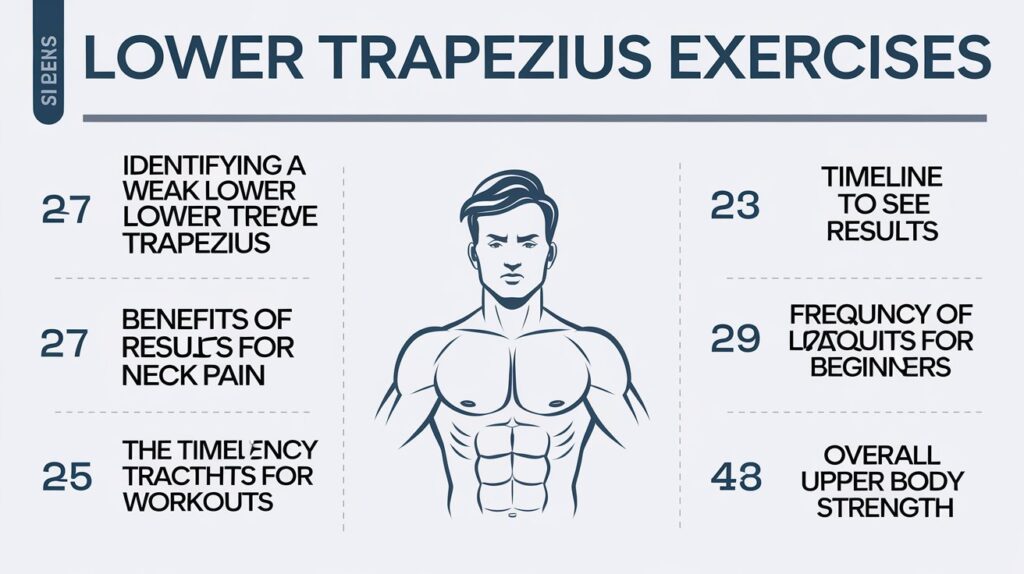
By incorporating these lower trapezius exercises into your routine, you can build a stronger,
more stable upper back and improve your posture. Not only will this enhance your performance in sports and lifting, but it will also help reduce pain and discomfort in the shoulders and neck. With consistency and proper technique, you’ll see significant benefits in your overall upper body strength and health.
